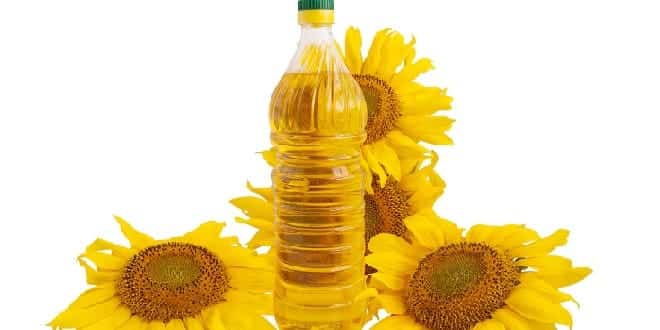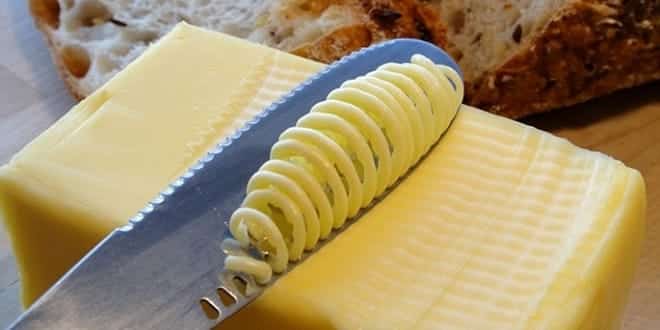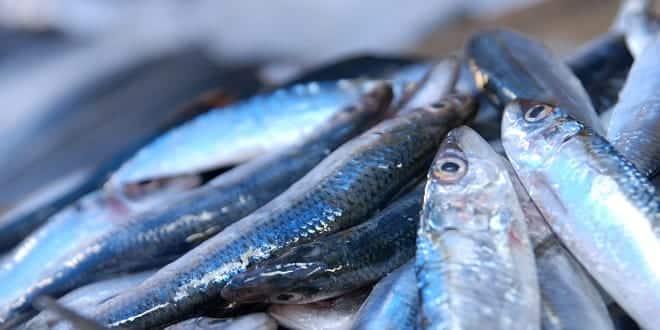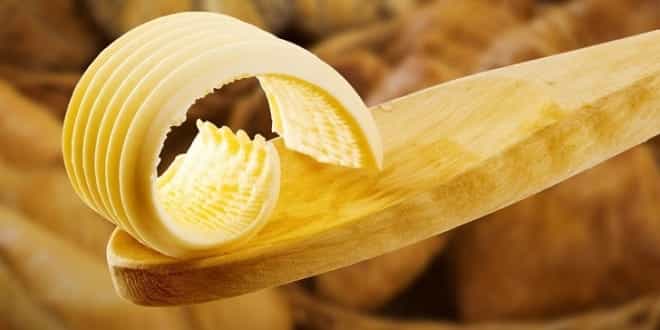Butter Production
FE 467
FOOD ENGINEERING DESIGN
BALIM BUTTER
Submitted by: ESRA KURTOĞLU
:MEHMET LÜTFİ GÜZEL
ADVISER : DR. MEDENİ MASKAN
process descrIptIon
Milk reception
Heat Pre-Treatment
Separation
Pasteurization
Ripening
Churning
Packaging
Storage
MİLK RECEPTION UNIT
Qualıty control of raw milk
color
odor
flavor
fat content
soluble solid content
ph
Microbial inspection
antibiotic
Milk filtration
Heat pre-treatment
SEPaRATION
Milk is separated into the cream and skimmed milk through the centrifugal seperator device
50 C for 1 hour at 5000 rpm
Pasteurization
RIPeNING
Churning prosess
Cream is converted into butter and butter milk
Churning process is done at 10 C and for 40 minutes
After 30 minutes % 1 by mass salt is added and churning is continued for 10 minutes(working )
PACKAGING
STORAGE
Butter is stored at 0 C between 2 and 4 weeks
Skimmed can be stored for several months without opening
Plant lay out
EquIpment lay out
MASS BALANCE
v Mass balanca around seperator:
A=200000L milk B=cream milk
Xa= 0,035 Xb=0,45
C=skimmed milk
Xc=0,0005
Total mass balance around seperator:
A = B + C
200000L*1,025KG/L = B + C
205000KG = B + C
Fat balance around seperator:
A*Xa=B*Xb+C*Xc
205000*0,035 = B*0,45 + (205000-B)*0,0005
B=15734,15 KG
C=189265,9 KG
Mass balance around churning:
B=15734,15 kg D=butter
Xb=0,45 Xd=0,82
E=butter milk
Xe = 0,0069
Mass balance
Total mass balance around churning:
B = D + E
15734,15= D + E
E = 15734,15 – D
Fat balance around churning:
B*Xb = D*Xd + E*Xe
15734,15*0,45 = D*0,82 + (15734,15-D)*(0,0069)
D=8574,35 KG
E=7159,8 KG
TANK DESIGN
Design Requirements
Volume of the tank
Height and diameter of the tank
Working pressure
Shell thickness
Head thickness
Bottom thickness
Balance tank (InsuLATED)
Keeps the product at a constant level above the pump inlet.
The head on the suction side is kept constant.
Volume of the tank :
V (volume of the milk) = 200000 L
1m3 = 1000 L
V (milk) =200 m3
safety factor is taken 20%
V tank = (200) * (1,2) =240 m3 è milk in 3 storage tank
ÒVolume of each tank: 240/3=80 m3
ÒHeight of each the tank :
V tank = π/4 *D2 * H
H = 4/3 D
V tank = π/3 * D3
80 m3 = π/3 * D3 è D = 4,24 m = 166,84 in
H =5,65 m
Working pressure :
P total = P optimum + H * g *ρ
= 1 atm + 5,65 m * 9.8 m/s2 * 1030 kg/m3 * 1atm * (1/101,3 * 103N/m2) * (1kg m /s2 N)
= 1 + 0,56
P total = 1,56 atm = 23 psi
Shell thickness :
ts = (PD + C) / (2Se – P)
S = Su * Fa * Fr * Fs * Fm
(Su = 9000psi for stainles steel type of 304)
S = 9000psi * 1 * 1 * 0,25 * 1
= 2250 psi = 153 atm
e = 0,80 è for double-buft joint
C = 1/16 inch = 1,58 * 10-3 m
Douter = 4,24+ 2* 0,0287
=4,2974 m
= 169,05 in
ÒHead thickness :
th = (P * L * W) / (2 * S * e)
W = 1,80
L (crown radius)= Di – 6 in
=166,84 – 6
=160,84 in =4,08 m
kr (knuckle radius)= 0.06*Do
=0.06 *169,05 in
=10,143 in
R= kr /L = 10,143/160,84 = 0,06
W = 1,8 (Values of Factor W for Dished heads table)
th = (1,56*4,08*1,80)/(2*153*0,8)
th = 0,0468 m = 46,8 mm
ÒBottom thickness : is equal to head thickness.
tb = 0,0468 m = 46,8 mm
PIPING DESIGN
PUMP POWER CALCULATION
HEAT BALANCE
PIPING DESIGN
•Determination of optimum diameter
•Evaluation of frictional losses
•Calculation of pump power
PUMP POWER CALCULATION
•CENTRIFUGAL PUMP ;
•In dairy process, centrifugal pump is used.
•Centrifugal pumps are commonly used to move liquids through a piping system.
•Centrifugal pumps are used for large discharge through smaller heads.
•POSITIVE PUMP ;
•UHT- steam injection section
•Define net amount of milk is pumped
•Flow of pump is controlled by regulating the speed
Properties of steel pipe ( Taken from Perry’s Chemical Engineering Handbook)
Mass of the milk = 13733,33 kg/h
ID = 0,05 m
Viscosity of milk, μ = 2,12 cp = 2,12 *10-3 Pa.s
Density of milk, ρ = 1030 kg/m3
Process time= 15 hour
Area of pipe = 1,96 * 10-3 m2
Volumetric flow rate, Q = (200m3 ) (1h / 3600s)/(15 h) = 5,6 * 10-2 m3/s
Velocity, v = Q / A = 1,89 m/s
•Reynold’s Number, Nre = (D*v*ρ)/μ
Nre =0.05 *1.89 *1030 /2.12*10-3 =45912,7 è Turbulent flow
•From Geankoplis, ɛ=4.6*10-5 for commercial steel pipe (figure2.10-3)
• ɛ/D = 4,6*10-5 / 0,05 = 9,2*10-4
•By using the NRe and ɛ/D we can find friction factor, f
f = 0.006 (figure 2.10-3 , Geankoplis)
Friction loss due to:
Straight pipe
Elbow
Valve
Expansion
Contraction
1) Friction losses in contraction
A2/A1=0(negligible)
α=1 for turbulent flow
hc=0.982J/kg
2) Friction losses in enlargement
V1 = 1.89 m/s
hex=1.78 J/kg
3-)Losses in fittings and valves
2 elbow 90 ° are used.
Le/D =Equivalent length of straightpipe in pipe diameter
Le/D = 35 (FromGeankoplis)
Le = 2 * 35 * 0.05 = 3.5 m
1 gatevalve (wideopen)
Le/D = 9 (FromGeankoplis)
Le = 1 * 9 * 0,05 = 0,45 m
Total length = ΔL
ΔL = 4 m + 3.5 m + 0,45 m =7.95 m
hf = Kf* V12/2α
Kf =0.75 α= 1 from table 2.10-1
hf = 0,75*3,57/2=1,33
(For valve and elbow)
ÒFf = 13,63 J/kg
∑F = 13,63 J/kg+1,33J/KG+0.982J/kg+1,78J/KG
∑F = 17,72J/kg
Δz = 3 m
Ws = 3 m * 9,8 m/s2 + 17,72J/kg =47,12J/kg
Ws = η * Wp η=0,80
Wp = 58,9 J/kg
58,9J/kg * 13733,33 kg/h * (1/3600 sec)* ( 1 kW/ 1000 W)
Wp = 0,224kW
Power of pump = 0,224 kW * (1 hp / 0,745)
=0,3 hP
HEAT BALANCES
Plate heat exchanger
• The plate heat exchanger consist of a series of paralel plates which are held together within a rigid frame.
•The plates are seperated by rubber gaskets to form narrow chambers between each pair of plates and exchange of heat takes place between chambers through each plate
FOR cream PASTEURIZATION
Mass flow rate = 13733,33 kg/h
Cp(hot water) = 4200 J / kg.K
Cp(cold water) = 4180 J / kg.K
Cp(milk) = 3900 J / kg.K
ρ milk (4°C) = 1030 kg / m3
ρwater(95°C) = 975.3 kg / m3
ρ water(2°C) = 1000 kg / m3
Heat supplied in regeneration = 75 % of total heat
Calculation of overall heat transfer coefficient ( U )
L= 0.87 m
W = 0.3 m
Δx = 0.003 m è Technology of milk book
A = 0.146 m2
Gap between plates = 0.0126 m
Deq = 2*a*b/(a+b)
Deq = 2*0.3*0.0126/ 0.3+ 0.0126 = 0.024 m
Thermal Conductivity of stainless steel (k) =16.3 W/mK
Q= 13733,33 kg/h *(1 hr/3600 sec)*(1/1030 kg/m3) = 3.7*10-3 m3/sec
Q=V*A 3.7*10-3 m3 /s= V*π (0.024²/4) ; V=8,18 m/s
ÒNre:DVρ /µ = 45912.7
Npr: Cp µ/k =16.5
Nu=h*De/k=0.2536(NRe )0.65*(Npr)0.4
Heat transfer coefficient of milk (hmilk) = 2906 W/m2K
Heat transfer coefficient of water (hwater) = 3000 W/m2K
Ureg. = 5700 W / m2.K
Uheating = 5814 W / m2.K
Ucooling = 5650 W / m2.K
•Qtotal =mmilk *Cpmilk *(Tholding – Traw milk)
•Qtotal = 13733,33 kg/hr * 1 hr/ 3600 sec*3900 J/kg.K *(90-40ᵒC) =7,4*105W
•Qreg. =0.75*Qtotal =5,55*105 W
•Qheating = 0.25*Qtotal =1,85 *105 W
For regeneration section :
Qreg. = m*Cp*ΔT
5,55*105 W = 3,81 kg/s * 3900 * (T1 – 40)
T1 = 77,4°C
5,55*105 W = 3,81 kg/s * 3900 * (90– T3)
T3 =52,6°C
Ò 90 °C
52,6 °C 12,6°C
12,6 °C 77,4 °C
40 °C
ΔTlm = 12,6 °C
Q = U * A * ΔTlm
5,55*105 W = 5700W/m2 K* A* 12,6 °C
A = 7,72m2
Q = U * A * ΔTlm
5,1 * 105 = 5650 * A * 12,33
A = 7,32 m2
STEAM GENERATOR
A boiler or steam generator is a device used to create steam by applying heat energy to water
STEAM NEEDED FOR PASTEURIZATION PROCESS
Q=(m*Cp*ΔT)milk =(m*Cp*ΔT)water
Cp(milk) = 3900 J / kg.K
Cp(hot water) = 4200 J / kg.K
Mass flow rate = 13733,33 kg/hr
13733,33 kg/hr * 3900 J / kg.K*(40-18)K
=mwater * 4200j/kg.K *(95-86,2)K
mwater = 31881kg hot water/h is used
Assumed water at 10 °C
Amount of steam used to heat 31881 kg water at 10 °C to 95 °C
Q=(m*Cp*ΔT)water =ms * hfg
Steam is at 150 °C and 5 atm (from Dairy Handbook)
hfg = (2749-640) kj/kg =2109kj/kg
Q=(m*Cp*ΔT)water =ms * hfg
31881kg/h*4.2kj/kg.K*(95-10)K=1,1*107 kj/h
1,1*107 kj/h=ms*2109 kj/kg
ms = 5216 kgsteam/h
Amount of natural gas for steam :
Low energy value for natural gas : 8250kcal for 1m3 nat.gas
200m3/h nat. gas*8250 kcal/m3/h nat. Gas
=1.6*106 kcal/h
EFFICIENCY:93%
=1.4* 106 kcal/h
ÒSteam production and
distribution system
SEPERATOR
BELT CONVEYOR
COLD STORAGE
CREAM SEPERATION
A cream separator is a device used to separate cream from milk by centrifugal force
For this purpose, centrifugal separator is used for making it possible to separate cream from milk faster and more easily.
DESIGN OF CENTRIFUGE
•Process time:60 min
mass flow rate= 20600kg/60min * 1min/60s
=5,7 kg/s
•ώ:Angular velocity à ώ=(2πN)/60
•N=5000-6500 rpm (from tech.of milk book)
•N= 5000 rpm
•N= 5000rev/min * 1/60 = 83 rev/s
•ώ =(2*3.14*5000)/60=523 rev/s
•Radius of centrifuge à
•r c2 = (ρ1r12 – ρ2r22) / (ρ1 – ρ2)
•Ρmilk:1030 kg/m3 , Ρcream =950 kg/m3
•rout:0.15 m (outer radıus of the plates to the axıs of rotatıon)
•rin : 0.05 m (inner radıus of the plates to the axıs of rotation)
•r c2 =[1030 x (0.15)2 – 950 x (0.05)2] / (1030 – 950)
r c= 0.5 m ( radius of centrifuge )
V:Volume of centrifuge à
•V =A*h
•V= π (r22-r12) h
•h (height) = 0.2m rout:0.15 m rin : 0.05 m
•V=3.14*0.2*(0.152-0.052)
•V=0.012 m3 = 12 lt
Pressure of centrifuge : ∆P à
• ∆P=1/2(rcream* ώ 2(rout2-rin2))
•∆P=1/2(950kg/m3*(523 s-1)2 *(0.152-0.052)m²)
•∆P = 105 kg/m*s2 = 1*105 Pa
Fc:Centrifugal force à
Fc=m*rc * ώ 2
=5.7kg * 0.5m * (523s¯¹)2 =780 kN
POWER REQUIREMENT
P = (m/2 ) * (2* π*N*r)2
=(5.7/2) * (2*3.14*83*0.15) 2
=17422w =17,4kw =18 HP
Particle diameter à Dp
Q=(W2 (rl-rp) Dp2 V) / (18.µ. ln(r2/ r1))
Q=5.7kg/s *1/1030kg/m3 = 5.5*10-3 m3/s
5.5*10-3 = (5232)*(1030-950)* Dp2* 0.012 / 18 * 2.12 * 10-3 *ln (0.15/0.05)
Dp = 2.9*10-5 m=30 µm
Number of disc bowl à
•Q angle:60° (angle of the plates to the horızontal axıs (ranges from 45 to 60 degrees )
•5.5*10-3 =
((1030-950)*(3*10-5) 2*2*3.14*S*(83)2*(0.153-0.053)) / (3*18*0.00212*Tan60)
S = 109 plates
CONVEYOR BELT
•Carrying capacity:
lt=length = 3 m
b0=belt width = 1 m
V= belt speed = 1 m/s
Driving efficiency = 0.9
b = 1030 kg/m3
a=cross-section of material = b02 / 11 = 0.09 m2
T (carrying capacity) = a * b * V
= 0.09 * 1030 * 1 =92,7 kg / s
•Motor capacity:
•We : Power required to drive the empty conveyor
•We : Power required to move the material/load against friction of the rotating parts
•We : Power required to raise/elevate or lower the load
•WT = We + Wm ± Wr
•We = mi ( lt + 0.1*lt ) * g * µe * V
µe = friction coefficient= 0.03
mi = 60 * b0 = 60*1= 60 kg /m
•We = 60* (3 + 0.1 * 3) * 9.8 * 0.03 * 1
= 0.058kW = 0.079 hp
• Wm = T * lt * g * µm µm =0.04
= 92,7 * 3 * 9.8 * 0.04
=0.109 kW = 0.14 hp
• WT = We + Wm = 0.079 + 0.14 = 0.219 hp
MC (Motor Capacitiy) = 0.219/ 0.9 = 0.24 hp
COLD STORAGE ROOM
CALCULATIONS
PROPERTIES OF ROOM
•Tin=+4 °C
•Tout=30°C (average temperature of Balıkesir)
•Height of cold storage room = 6m
•Width of cold storage room =17m
•Length of storage room =51m
•Volume of cold storage = 51*17*6
= 5202m3
REFRIGERATION LOAD
1. Transmission load, which is heat conducted into the refrigerated space through its walls, floor, and ceiling;
2. Infiltration load, which is due to surrounding warm air entering the refrigerated space through the cracks and open doors
3. Product load, which is the heat removed from the food products as they are cooled to refrigeration temperature
4. Internal loads, which is heat generated by the lights, electric motors, and people in the refrigerated space
1. Transmission Load
Q=U*A*∆T
Q = heat loss
A= area of cold storage room
∆T= temperature difference between
outside and inside of room
U = overall heat transfer coefficient
wall
§For west wall , east wall and south wall
Δx polyurethane= 0.20 m
Δx ytong= 0.15 m
k polyurethane= 0.12 W/m.°K
k ytong= 0.13 W/m.°K
h outside= 22.7 W/m².°
h inside=9.37 W/m².°K
U= 0.3365 W/m².°K
Q= U*A*(To-Ti)
Q=0.3365*20*(30+3-4)
Q=195W
§For north wall
No solar effect
U=0.336 W/m².°K
Q=U*A*(To-Ti)
Q=0.336*20*(30-4)
Q=170W
§Roof
Ò2.Infiltration Load
Qf = (0.7*V + 2)ΔT
where Qf = heat flow, W
V = volume of room in m³
ΔT = temperature difference between room and ambient
Qf =(0.7*867+2) (30-4)
Qf = 15831,4W
3)Product Load
m=7555 kg/day * 1day/24*60*60 s
= 0,087 kg/s
Tin= +4 °C
Tproduct= 10 °C
Cp =3900 J/Kg.K
Q = m.Cp.∆T
Q = 0.087kg/s*3900 J/Kg.°K*(10-4)°K
Q = 2035 W
HYGIENE AND SANITATION
CIP
WASTE TREATMENT
COST REVISION
HYGIENE AND SANITATION
The arrangements for cleaning equipment that comes in contact with products are
an essential part of food processing plant.
HYGIENE AND SANITATION
Food manufacturers
should always keep İn mind the cleaning
obligations of equipment
and staff involved in
production to maintain
high hygienic standards.
TYPES OF DIRTS ON SURFACES
IN DAIRY MANUFACTURING
WASTE TREATMENT
Liquid waste = Waste water
sedimantion
Total Capital Investment
Total Product cost
Total Income
Gross & Net Profit
Cumulative Cash Position
Break Even Point
Profitability
Feasibility
Total Cap. Inv.= Fixed Cap. Inv.+Working Cap. Inv.
Fixed Cap. Inv.= Direct Cost + Indirect Cost
Purchased Equip. Cost = PEC + AEC + LEC
Where;
PEC – Process Equip. Cost
AEC – Auxiliary Equip. Cost
LEC – Lab. Equip. Cost
Process Equip. Cost
Auxiliary Equ. Cost
PE Cost = $ 4,180,354
Capital Estimation
WCI = 8,286,270 $
TCI = 24,754,892 $
Total Product Cost
=
General expenses + Manufacturing cost
Manufacturing cost = Direct Product Cost + Fixed charges + Plant Overhead Cost
General Expenses = Adm. Expenses + Dist. & Marketing + R & D
DIRECT PRODUCT COST
Raw material cost:-
-Raw milk: 200,000LPD *320 D/y*0.27$ = $ 17,280,000/y
-Salt: 180 kg/d * 320d/y *0.17$ = $ 9,792/ y
-Culture: 0.091 $/L * 16,221LPD *320d/y = 472,356 $/y
è Raw material cost = $ 17,762,148/y
Energy:
-Natural gas: 466,667 m^3/y * 0.447 $ = $ 208,732/y
-Electricity: 863 KW/d * 320 d/y = $ 276,160/ y
è Energy cost = $ 484,892/y
èTotal Product Cost
=
$ 33,145,083/y
Total Income
-Skim-milk : 58,801,087 L/y * 0.7 $/L =$ 41,160,760/y
-Butter : 2,720,000kg/y * 8.7$/L = $23,664,000/y
-Butter milk : 2,291,200 L/y *0.22$/L =$ 504,064/y
Total income = $ 65,328,824/y
Gross Earning = Total Income – Total Prod. Cost
Gross earning = $ 32,183,741/y
Net Profit
The required tax rate issued from the gov. is 20% of the gross earning.
According to the government’s incentive system for Balikesir, the gov. will pay back 60% of the 20% tax already has been paid after we -the company- earn half of the TCI.
The required tax to be paid regardless the incentive = $32,183,741/y * 0.2= $6,436,748/y
After earning ½ of the TCI the gov. will pay back 60% of the $ 6,436,748/y which is $3,862,050/y
è The obligatory tax is: 6,436,748 – 3,862,050
=
$ 2,574,698/y
èNet Profit = 32,183,741– 2,574,698
=
$29,609,043/y
Cumulative Cash Position
CCP = (Net profit+dep)X-TCI;
CCP= 0.83 y
Break Even Point
(Total Income/ton) (X) = (Total Product Cost/ton) (X) + Fixed Cost/y
997X = 506X + 588,755
èX = 1,197 Ton/y
1,197 Ton/65,576 Ton * 100= 1.82 % , i.e, the B.E.P is reached at 1.82 % of the present working capacity.
PROFITABILITY
Prof. = (total income – total prod. Cost)/total prod.cost *100
Profitability = 97 %
ÒFeasibility
S = TCI*(1+int.rate)n
The overall project is feasible
…




